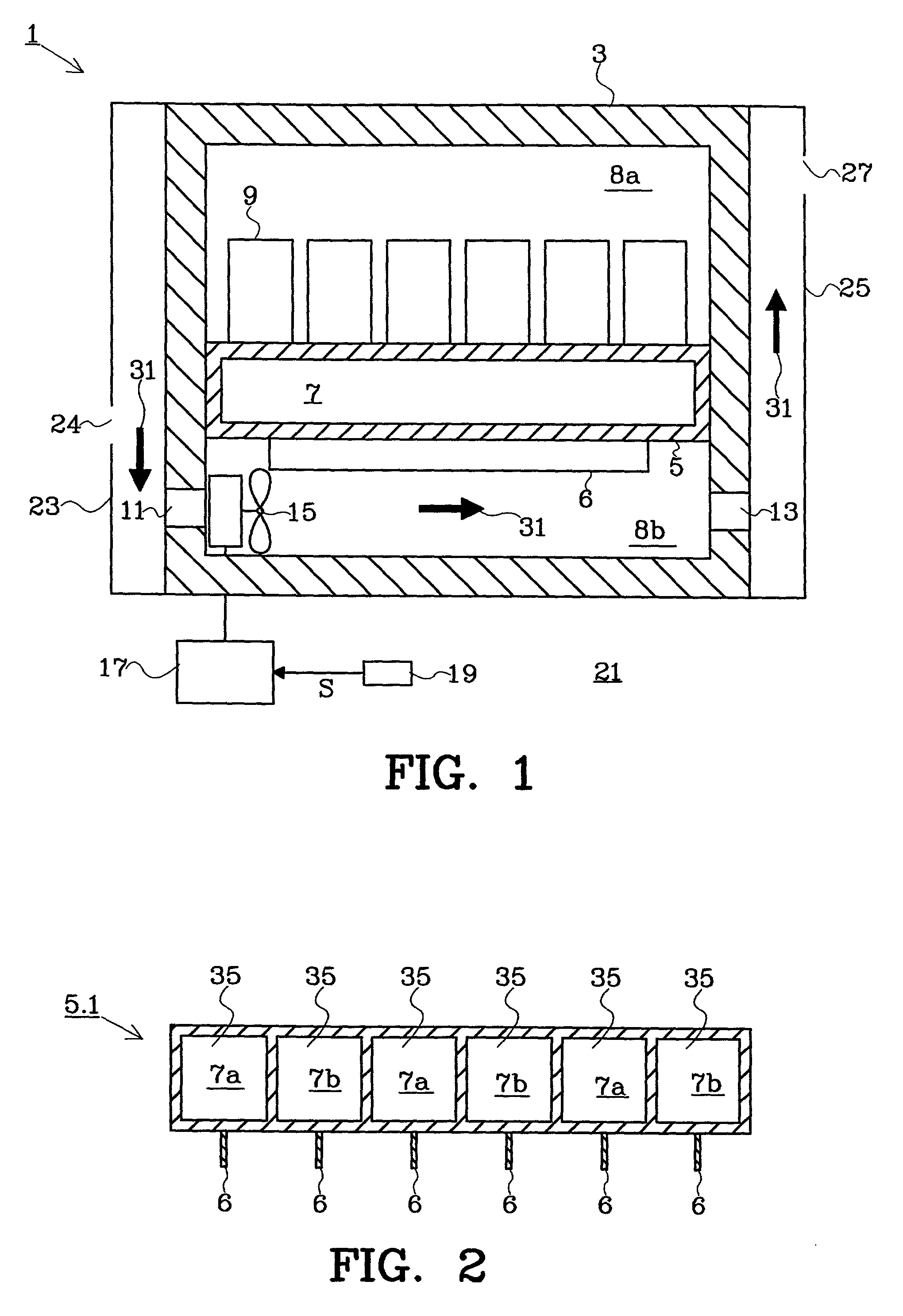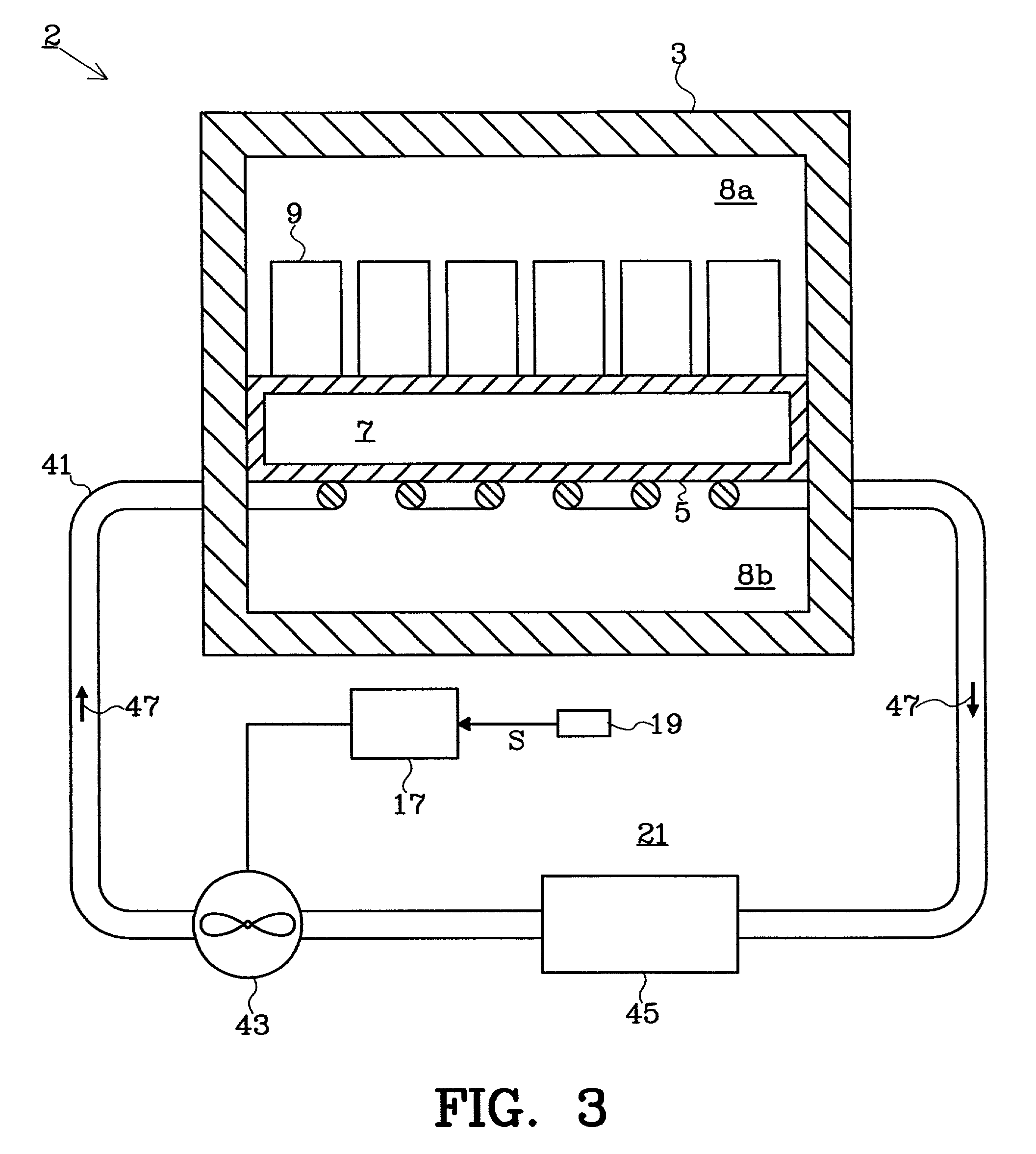Method and device relating to battery temperature regulation
a battery and temperature regulation technology, applied in the field of battery temperature regulation, can solve the problems of shortening the operating life of the battery, affecting the service life of the secondary cell, and quickly drying out liquid,
- Summary
- Abstract
- Description
- Claims
- Application Information
AI Technical Summary
Benefits of technology
Problems solved by technology
Method used
Image
Examples
Embodiment Construction
[0018] FIG. 1 is a cross-sectional view of a first device 1 for regulating a temperature of a number of batteries 9. The first device 1 includes a thermally insulating cabinet 3, which defines a space in which a container 5 is arranged. The container 5 is a good thermal conductor and contains a phase change material 7. The container 5, which is relatively flat, is arranged so that it divides the space in the cabinet 3 into a first (upper) section 8a and a second (lower) section 8b, the first and the second sections 8a and 8b being completely sealed off from each other. The batteries 9 are arranged in the first section 8a and are in thermal communication with the container 5 and the phase change material 7 therein. In this example the batteries 9 are arranged in upright positions on top of the container 5. A battery fluid in the batteries 9 is therefore at the bottom of the batteries 9 (i.e. close to the container 5), and this will provide an excellent thermal communication between t...
PUM
| Property | Measurement | Unit |
|---|---|---|
| temperatures | aaaaa | aaaaa |
| temperatures | aaaaa | aaaaa |
| temperature | aaaaa | aaaaa |
Abstract
Description
Claims
Application Information
 Login to View More
Login to View More - R&D
- Intellectual Property
- Life Sciences
- Materials
- Tech Scout
- Unparalleled Data Quality
- Higher Quality Content
- 60% Fewer Hallucinations
Browse by: Latest US Patents, China's latest patents, Technical Efficacy Thesaurus, Application Domain, Technology Topic, Popular Technical Reports.
© 2025 PatSnap. All rights reserved.Legal|Privacy policy|Modern Slavery Act Transparency Statement|Sitemap|About US| Contact US: help@patsnap.com


